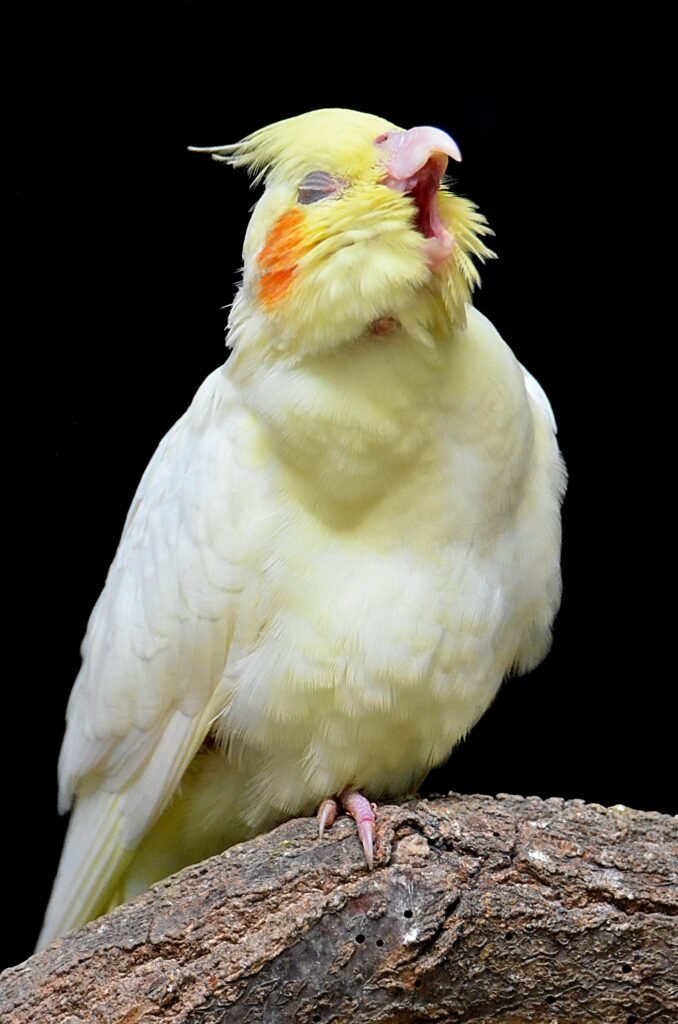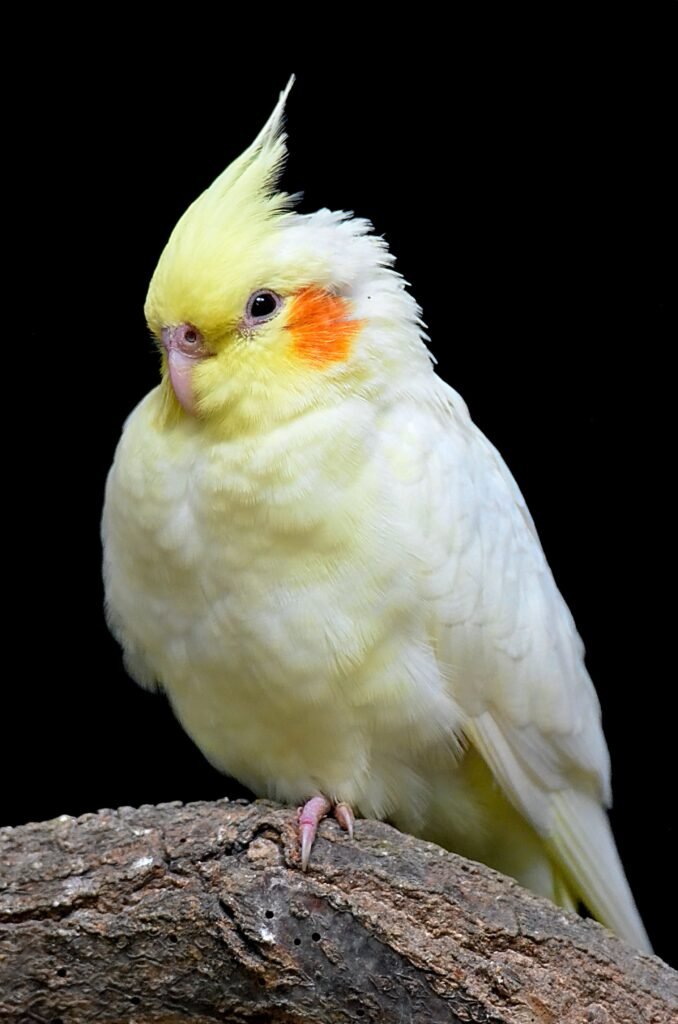
Cockatiels are small and friendly birds that make wonderful pets. One important aspect of their care is ensuring their safety and well-being by clipping their wings. Clipping cockatiel wings requires patience, precision, and knowledge. In this article, we will guide you through the step-by-step process of clipping cockatiel wings properly.
Why Clip Cockatiel Wings?
Clipping cockatiel wings is a common practice among pet owners for several reasons. The primary goal is to prevent the bird from flying away or injuring itself by colliding with objects. Clipping their wings can also help in taming and training cockatiels, as it restricts their movement, making them easier to handle and teach.
However, it is important to note that wing clipping should be done humanely and responsibly. It should not harm or discomfort the bird. It is advisable to consult a veterinarian or an experienced bird owner before attempting to clip your cockatiel’s wings for the first time.
Materials Needed:
Before you begin, gather the following materials:
- Bird nail clippers or specialized bird wing clippers: To ensure a clean and precise cut, it is essential to use the right tools. Bird nails or specialized bird wing clippers are designed specifically for this purpose, making the process easier and safer.
- Styptic powder: Accidental bleeding can occur if a blood feather is cut. Styptic powder, also known as clotting powder, is a valuable tool to have on hand. It helps stop bleeding by promoting blood clotting, ensuring the bird’s safety, and preventing further injury.
- Towel or cloth to gently restrain the bird: Restraining the bird is necessary to ensure a calm and controlled environment during the wing clipping. Using a towel or cloth lets you gently wrap the bird, providing a sense of security while limiting its movement.
- Treats or rewards to encourage positive behavior: Positive reinforcement is essential in training and taming cockatiels. Offering treats or rewards during and after the wing clipping process helps create a positive association and reduces the bird’s anxiety.

Step-by-Step Guide:
- Prepare a Safe Environment: Choose a quiet and well-lit room for clipping. Ensure no open windows or fans prevent the bird from flying away. Cockatiels are curious creatures, and a safe environment is crucial to avoid accidents.
- Understand the Wing Structure: Familiarize yourself with the anatomy of the cockatiel’s wings. The primary feathers, called flight feathers, are located at the tip of the wings and are the ones you will be trimming. Knowing the wing structure helps you identify the correct feathers to clip.
- Restrain the Bird Gently: Approach your cockatiel calmly and confidently. Birds can sense fear or anxiety, so it’s important to remain calm to avoid stressing the bird. Place a towel or cloth over the bird’s body, exposing the head. Gently wrap the towel around the bird, ensuring it feels secure but not too tight. This restraint method helps keep the bird calm and prevents sudden movements that could lead to injury.
- Identify the Primary Feathers: Carefully unfold one wing at a time, examining the primary feathers. The primary feathers are usually longer, thicker, and more rigid than others. They are responsible for generating lifts during flights by identifying and trimming the right ones.
- Determination by identifying these feathers. Trimming Length: Deciding how much to clip off the primary feathers is crucial. Trimming only the first few primary feathers is recommended, leaving the rest intact. This allows the bird to maintain balance and glide. Trimming too many feathers can hinder the bird’s ability to fly, causing unnecessary stress and imbalance.
- Trim the Feathers: Using the bird nail clippers or specialized wing clippers, make a quick and clean cut just above the blood-filled shaft of the feather. Take extreme care not to cut into the blood vessels or live tissue. It is essential to make a precise cut to minimize any discomfort or pain for the bird. If you accidentally cut a blood feather and bleeding occurs, use styptic powder to stop the bleeding. Apply a small amount of powder to the cut end of the feather, and gentle pressure should be enough to stop the bleeding.
- Repeat the Process: Move on to the other wing and repeat the trimming process. Remember to keep the cut feathers aside for disposal later. The wing length ensures this important bird’s balance and overall flight capabilities.
- Observe the Bird: Once trimming both wings, release the bird from the towel and observe its behavior. The cockatiel may initially feel a little off-balance, so provide a safe and secure space to readjust. Offer treats and positive reinforcement to encourage the bird’s calmness. This positive interaction helps build trust and strengthens your bond with your feathered companion.
Important Considerations:
Here are some additional considerations to keep in mind when clipping your cockatiel’s wings:
- Frequency of Trimming: Cockatiel wings must be trimmed every 8 to 12 weeks as the feathers grow back. Regularly check the wings for feather regrowth and trim accordingly. Maintaining a regular trimming schedule ensures the bird’s safety and prevents excessive feather growth.
- Avoid Over-Clipping: It is crucial to trim only the necessary feathers without over-clipping. Cutting too many feathers can hinder the bird’s ability to glide and cause unnecessary stress. Striking the right balance between flight and safety is essential.
- Professional Assistance: If you need more clarification about trimming your cockatiel’s wings or if your bird becomes anxious, consult a veterinarian or a professional bird groomer. They have the experience and knowledge to perform the task safely and effectively. Seeking professional guidance is always a wise decision when in doubt.
- Positive Reinforcement: Always use positive reinforcement techniques, such as treats and praises, to reward your cockatiel for good behavior during and after the clipping process. This helps build trust and strengthens your bond with the bird. Positive reinforcement creates a pleasant association with the wing clipping experience, making future sessions easier and less stressful.
- Safety Precautions: Ensure all tools are clean and sterilized to prevent infection. Keeping the tools sanitized reduces the risk of introducing bacteria or other harmful substances to the bird’s wings. Additionally, keep styptic powder or cornstarch nearby to stop any accidental bleeding. Preparing for unforeseen circumstances promotes a safer environment for you and your cockatiel.
Conclusion:
Clipping cockatiel wings is an important aspect of responsible pet ownership. By following the step-by-step process outlined above, you can ensure the safety and well-being of your cockatiel while maintaining its ability to glide and balance. Remember to approach the process with patience, care, and respect for your feathered friend. If in doubt, seek professional guidance to ensure the best outcome for your beloved pet. Your cockatiel’s wings play a crucial role in its overall health and happiness, and with proper wing clipping, you can provide a safe and enriching environment for your beloved bird.
FAQ
- Why should I clip my cockatiel’s wings? Clipping cockatiel wings is important to prevent the bird from flying away or injuring itself. It also helps tame and train cockatiels by restricting their movement, making them easier to handle and teach.
- What materials do I need to clip my cockatiel’s wings? You will need bird nail clippers or specialized bird wing clippers, styptic powder, a towel or cloth to restrain the bird, and treats or rewards for positive reinforcement.
- How do I clip my cockatiel’s wings? First, prepare a safe environment and familiarize yourself with the wing structure. Gently restrain the bird with a towel or cloth, identify the primary feathers, and determine the trimming length. Carefully trim the feathers above the blood-filled shaft, ensuring a clean cut. Repeat the process for the other wing.
- What are some important considerations when clipping my cockatiel’s wings? Some important considerations include the frequency of trimming (every 8 to 12 weeks), avoiding over-clipping, seeking professional assistance if needed, using positive reinforcement techniques, and taking safety precautions by keeping tools clean and having styptic powder or cornstarch on hand.



